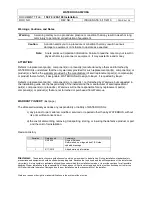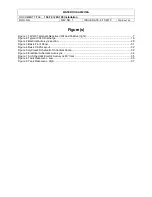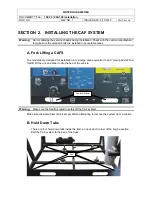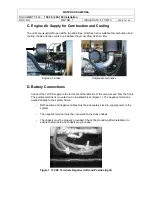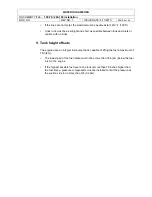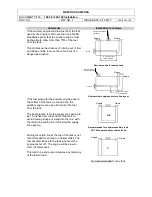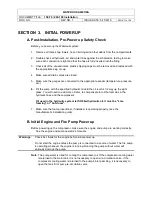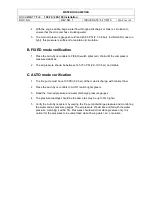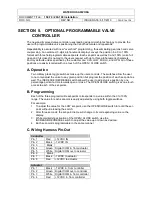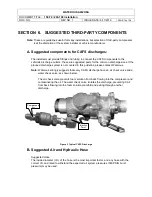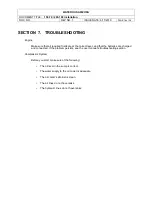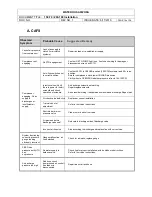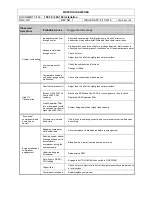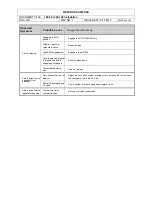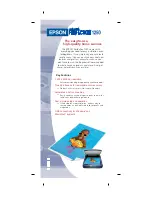
WATEROUS ARIZONA
DOCUMENT TITLE:
150-70 / 200-100 Installation
DOC. NO.
REV NO. 1
ISSUE DATE: 6/17/2010
PAGE 8 of 38
E. Fuel supply
I. Fuel Filtering
The engine has an integral fuel filter with a replaceable element to protect the fuel
pump.
If the fuel has high water content, or if temperature fluctuations produce water
condensation in the tank, a water separator is required.
If the vehicle will be operated under extreme conditions (poor fuel quality, dirt
contamination of fuel likely, high water content, and poor access to spares) it is
recommended that a combination of strainers and filters be used.
II. Fuel Tanks
The basic requirements for tanks are:
•
Tanks must be ventilated adequately at any angle the engine is likely to be
operated in.
•
Tanks must not be galvanized with zinc or made of any metal high in zinc
because some fuels will react with the tank and build up a soapy zinc compound
that clogs the fuel injectors.
•
Tanks must be constructed to have a large surface area at any fuel level to
facilitate out-gassing.
•
Tanks must have a sludge drain valve at the bottom.
III. Supply and Return Fuel Lines for Fuel Injection
Fuel injected engines require a closed loop full of fuel (in lines and tank) from the
tank to the injector and back. The engine is provided with an excess of fuel, and the
unused fuel flows back to the tank. This ensures a continual supply of fuel at the
injector. The return line must end 1/2 inch below the supply line to prevent air
entering the fuel loop between the tank and auxiliary engine.
IV. Fuel line Materials
Minimum I.D. at the smallest cross section in the system:
Fuel line length
Minimum inner diameter
Less than 6ft (2m)
3/8in (10mm)
6ft (2m) to 18ft (6m)
1/2in (12mm)
•
Lines must be copper or non-scaling stainless steel.


